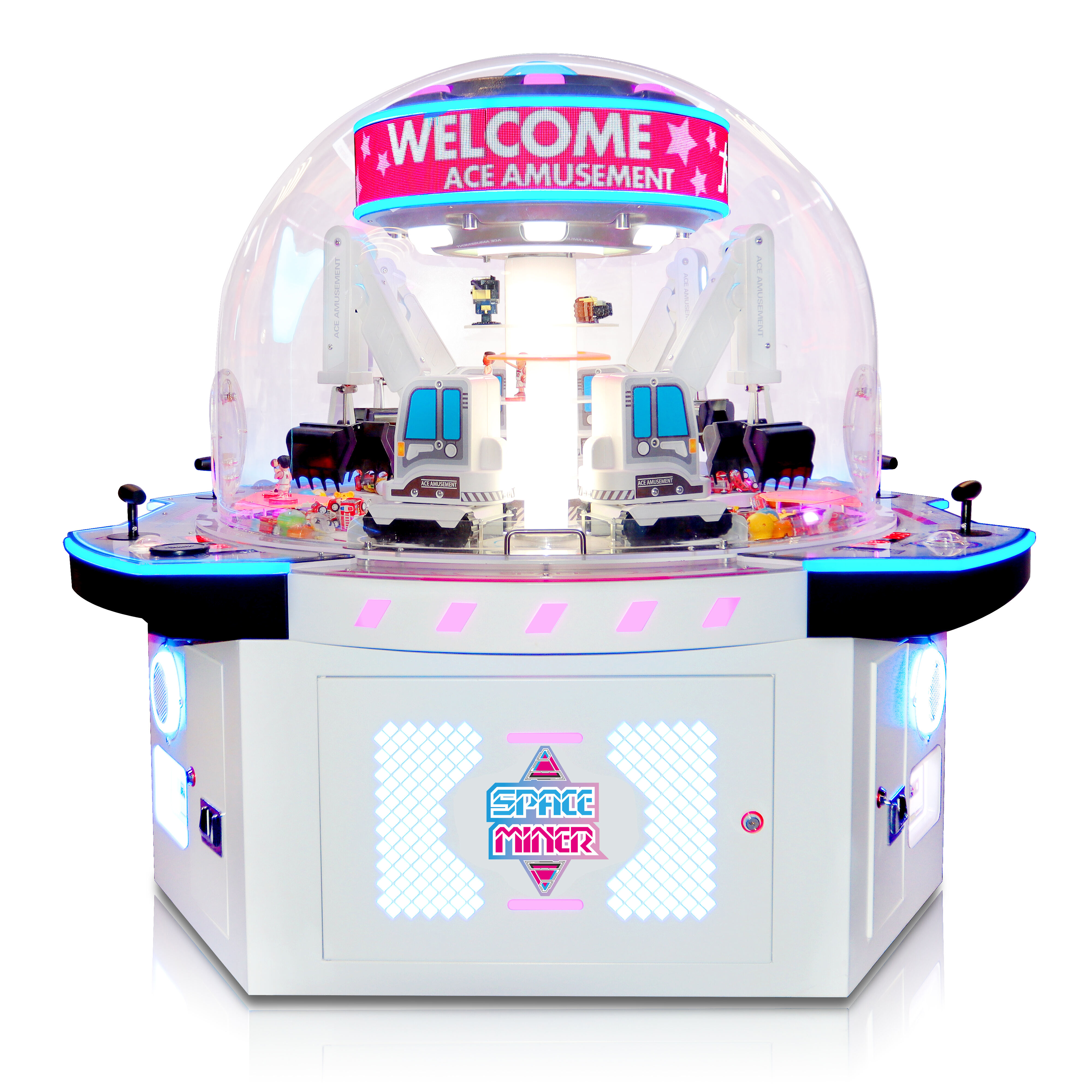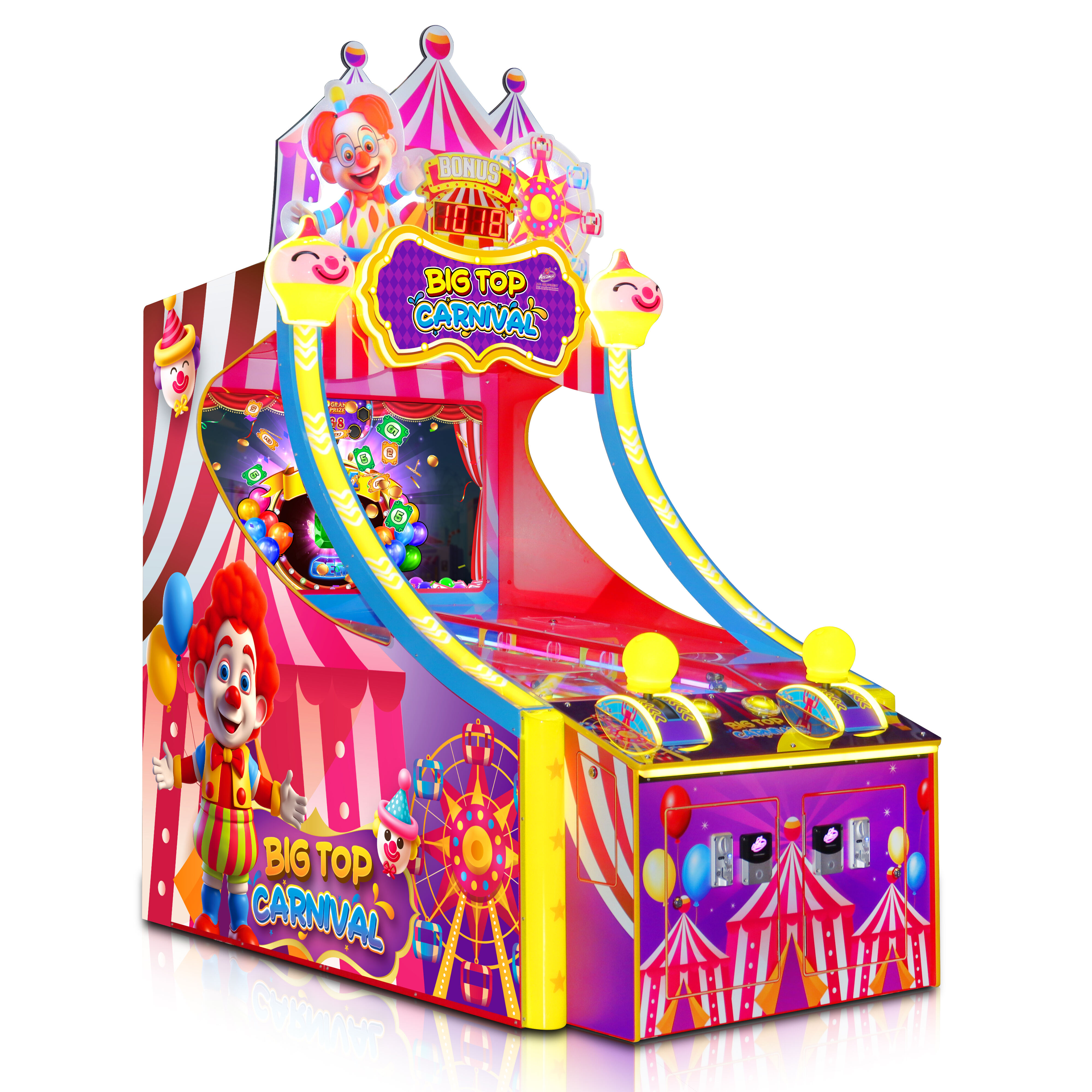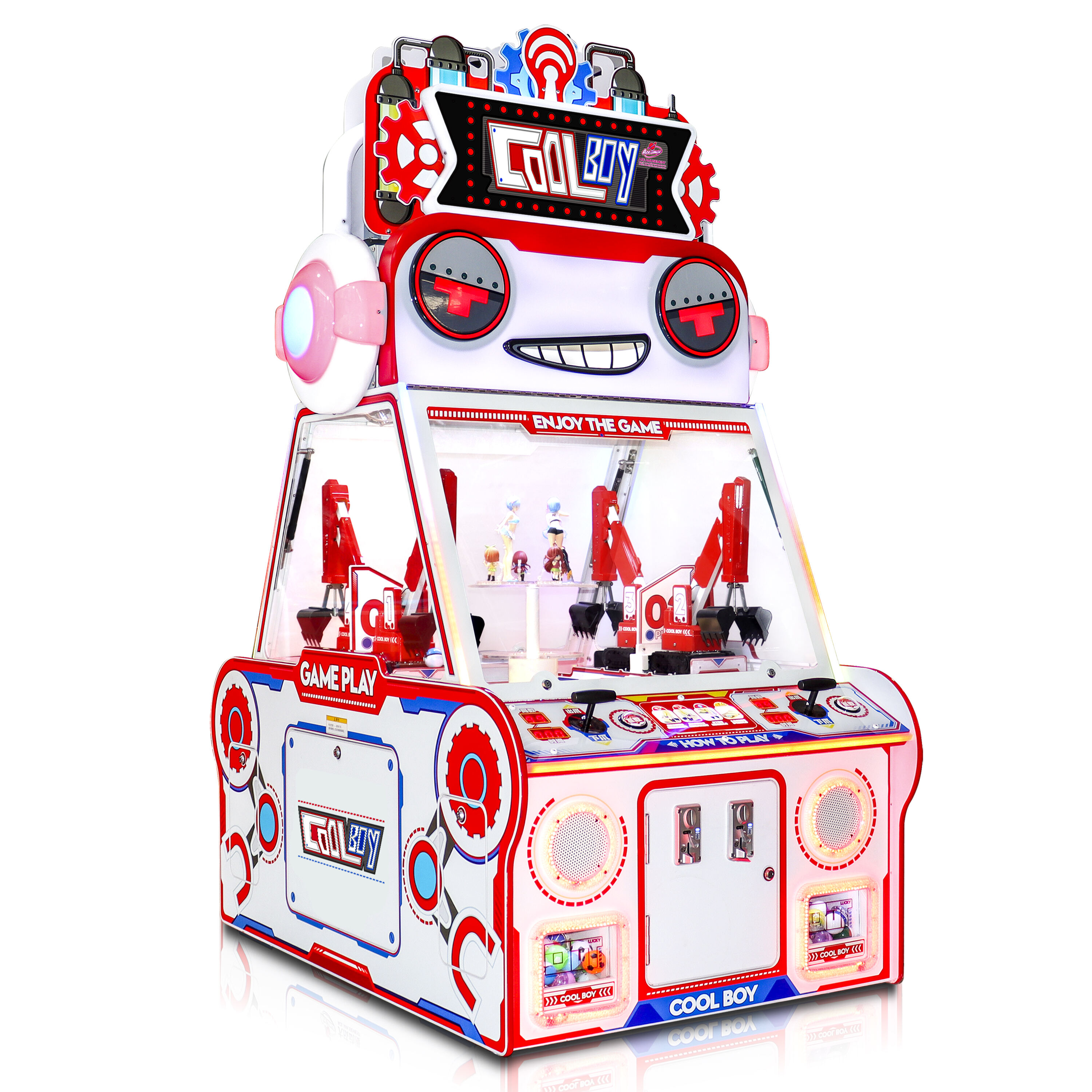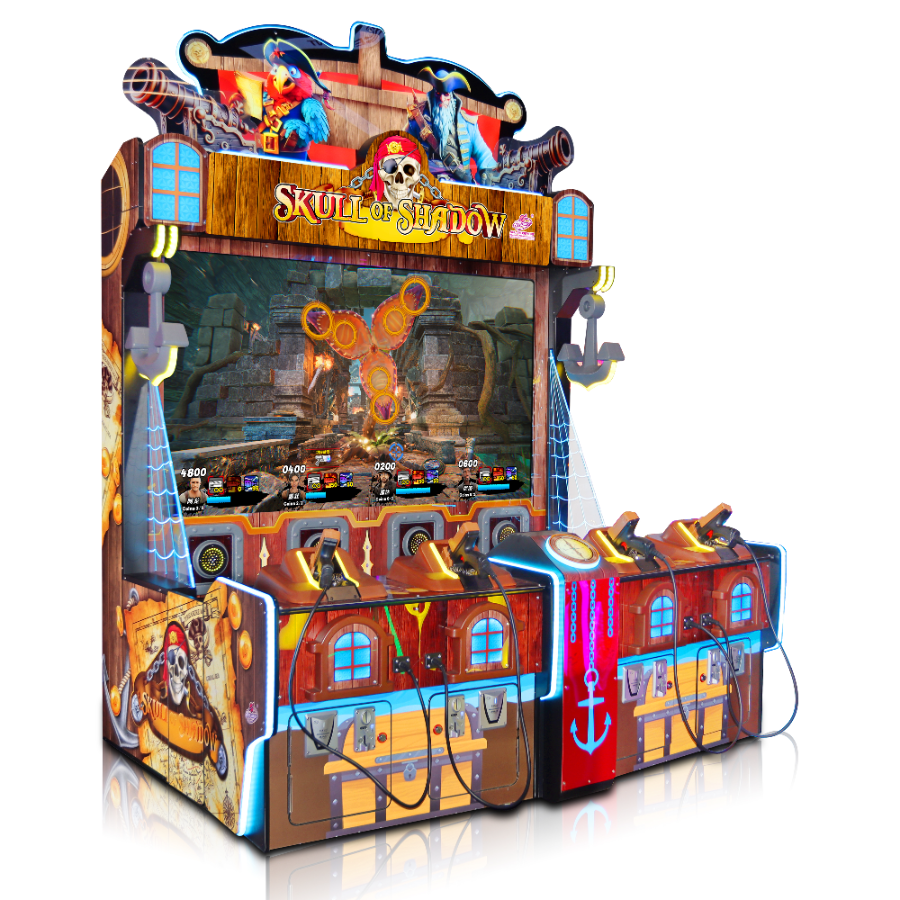Overview of the GTI Guangzhou Exhibition in September 2020
Key details of the GTI China Expo event timing and location (September, Guangzhou)
The GTI Guangzhou Gaming Exhibition ran from September 25th through 27th, 2020 at the China Import and Export Fair Complex. This event really put Guangzhou on the map as a key location for trade shows throughout Asia. Being one of the first big face-to-face gaming expos since those pandemic lockdowns started, organizers managed to attract around 6,200 people who came to see what was happening. There were also about 300 different exhibitors spread out over roughly 23,000 square meters of exhibition space. What made this event special was how it brought together game makers and sellers directly. Local businesses from Guangdong Province especially benefited because they had been responsible for nearly 40% of all arcade game money earned in China prior to the virus outbreak according to IBISWorld data from 2020. Everyone stayed safe thanks to strict rules implemented during the show including plenty of spacing between booths and fancy air filters running throughout the building.
Significance of the GTI Asia China Expo in the gaming industry events in China
The 2020 expo marked something of a comeback moment for in-person trade shows in the gaming world, mixing traditional face-to-face product showcases with online viewing options for those who couldn't attend. Over 68 percent of Chinese amusement machine manufacturers showed up at this event, which really pushed forward the move toward cashless payments. According to Frost & Sullivan data from 2021, this shift is expected to keep growing at around 11.3 percent each year until 2025. What stood out most was how well the show performed despite travel limitations during that time. Many companies found that customers actually converted better after seeing products in person rather than just watching them online, showing that there's still real value in hands-on experiences when it comes to selling gaming equipment.
Post-Pandemic Resurgence of In-Person Gaming Expos in China
The GTI Guangzhou Exhibition held back in September 2020 showed how in person trade shows were coming back strong as key places where people in China's gaming world could meet, share ideas, and network. Being the biggest physical event since lockdown restrictions lifted, this gathering really put Guangzhou back on the map as the go to city for all things amusement and gaming related. The organizers made sure everyone stayed safe too with things like checking crowd levels in real time and requiring visitors to scan QR codes for health verification before entering.
This resurgence contrasted sharply with widespread cancellations earlier in 2020. A survey by the International Gaming Expo Council found that 78% of exhibitors favored hybrid formats, blending on-site interaction with digital outreach. While attendance reached 62% of 2019 levels, virtual participation surged by 210%, highlighting sustained demand for both physical and online engagement.
Experiential activations played a key role, with one leading arcade manufacturer reporting a 40% increase in pre-orders following live demonstrations. This aligns with findings from the 2024 Interactive Entertainment Report, which revealed that 68% of players value hands-on testing of gaming hardware over reviewing technical specifications online.
Structure and Organization of the GTI China Expo 2020
Core Objectives of Arcade Game Exhibitions in Guangzhou
At the GTI Guangzhou Exhibition, there were really three main things going on: pushing forward new tech, building connections across different industries, and displaying products that are actually ready for sale. Being able to walk around and actually touch the arcade machines, try out the motion simulators, and see how the cashless payment systems work made all the difference for people looking to buy equipment. The folks running the show kept talking about how important it is for game software creators to work closely with the hardware makers. Makes sense too, since Guangzhou has been quietly becoming one of the top spots in China for gaming tech development over the past few years.
Logistics of Expo Event Locations and Dates for September 2020
The event took place at the Canton Fair Complex, right where it needed to be given Guangzhou's excellent transport links. Most folks got there by train or subway actually, something like eight out of ten visitors according to the numbers we saw. The massive 40,000 square meter space had separate areas set up for different things too. There were sections for virtual reality stuff, those redemption games where you win prizes, and all sorts of coin operated machines. This setup really helped people find what they wanted without getting lost in crowds. They also changed things up with timed entries. Big buyers came in first thing in the morning while hobbyists filtered in later. This little tweak apparently made a difference, with people spending around a third more time at the show than before. Makes sense when you think about it though.
Integration of Technology and Regulatory Compliance in the GTI Guangzhou Exhibition
Safety was a top concern so event organizers put in place real time crowd monitoring systems to keep numbers under 60 percent capacity limits. They also made digital health checks mandatory before anyone could get inside. At the exhibition floor, companies displayed all sorts of new tech that fits with China's 2020 safety guidelines for amusement facilities. Some examples included games that don't need physical contact between players and machines equipped with artificial intelligence to spot maintenance issues early on. The Asia Pacific Amusement Forum held several panel discussions where big names in the industry talked about how things have changed since the pandemic hit. According to recent stats from 2024, around three quarters of arcades across China are already following these new operating procedures.
Participant Engagement and Key Outcomes at the 2020 GTI Asia China Expo
Profile of Exhibitors and Visitors at the Game and Amusement Industry Exhibition
Over 120 companies showed up at the event representing everything from arcade game makers to VR system developers and operators of coin-based entertainment units. The crowd was pretty diverse too, with folks making decisions for FECs, theme park operators, and gaming resort managers coming all the way from different parts of China and throughout Southeast Asia. About two thirds of those exhibiting actually set up meetings ahead of time with local buyers, which really highlights how well this expo connects businesses across provincial boundaries. Many exhibitors told us these scheduled talks made all the difference in closing deals that might otherwise have taken months to arrange through traditional channels.
Notable Product Launches During the GTI Guangzhou Exhibition in September 2020
At the recent trade show, several interesting innovations caught attention including those haptic feedback cabinets and those new cashless prize redemption systems everyone's talking about. Among them, there was this really cool multilingual VR/AR racing simulator that combines both technologies into one package. The developers apparently targeted markets throughout the Asia-Pacific area where language diversity is a big factor. All these products comply with China's latest amusement safety rules which came into effect last year. What's interesting is how they've incorporated better cleaning protocols for parts people touch repeatedly during operation. Makes sense given current health concerns but also just good practice overall.
Success Story: ACE Amusement Technologies Co. Ltd's Presence at the Trade Fair in Guangzhou
ACE Amusement Technologies took advantage of the event to launch their new AI driven ticket redemption kiosk system. They managed to get around 43 tentative deals going with amusement park operators mainly from Guangdong and Fujian regions. The company's massive 72 square meter exhibition space drew in well over 850 potential clients during the show. Pretty impressive too - about one out of every five visitors actually placed real orders within three months after attending. Looking at the numbers, this turned out to be twice as good as what they achieved when participating in online trade shows last year, making it a pretty smart move for the company.
Networking Outcomes and Business Deals Facilitated by the In-Person Format
The Business Matchmaking Program at the expo helped generate around $8.2 million worth of initial agreements through those 320 planned meetings. A major FEC operator based in Shanghai actually signed off on a ¥3.7 million equipment deal with no fewer than three different suppliers right there at the event venue. When we checked back with attendees later, about 78 percent said they liked the mix of face-to-face product testing combined with online follow ups better than either approach alone. This feedback is definitely influencing how organizers plan next year's GTI China Expo format.
Future Trends and Strategic Outlook for Gaming Industry Events in Guangzhou
Growth Trajectory of the GTI China Expo From Past Editions to 2020
Despite pandemic challenges, the GTI Guangzhou Exhibition achieved an 8.04% compound annual growth rate (CAGR) in participation between 2018 and 2020 (Technavio 2024). Exhibitor numbers rose 22% year-over-year in 2020, reflecting strong confidence in Guangzhou as Asia's premier destination for arcade innovation—even under restricted capacity conditions.
Convergence of Digital and Physical Experiences at Arcade Game Exhibitions
With hybrid platforms in place, people watching from afar could get their hands on about 78 percent of all the games shown through live streaming. That represents a massive jump in online interaction, around three times what we saw back in 2019. The cloud demo systems made it possible for folks anywhere in the world to actually play these games as they happened, no matter where they lived. Looking ahead, market analysts predict that nearly two thirds of China's gaming money will come from devices connected to the cloud by the year 2028 according to the latest report from the China Gaming Market in 2024. Pretty impressive stuff when you think about it.
Emerging Market Demands Shaping the Future of Gaming Expos
AI-enhanced peripherals dominated 2020 product pipelines, accounting for 40% of exhibitor prototypes, including motion-tracking controllers and haptic feedback wearables. These innovations are being accelerated by government investments, including a $28 billion national initiative to advance AI-powered hardware development (Future Market Insights 2024), shortening product development cycles and increasing R&D collaboration.
Opportunities for Global Expansion of the GTI Asia China Expo
The numbers after 2020 show real promise for arcade gaming growth in places like Southeast Asia and the Middle East and North Africa region. Revenue there has been going up about 12% each year. Looking at China's massive $740 billion gaming market from the 2024 Global Gaming Trends Report, there's room to adapt the hybrid expo format successfully elsewhere. The Guangzhou model worked so well locally that similar approaches might take off if we partner with local organizers and co-host events across different areas. This kind of collaboration seems like it could work wonders in these newer markets too.
FAQ
What is the significance of the GTI Guangzhou Exhibition?
The GTI Guangzhou Exhibition is significant as it marked a major comeback for in-person trade shows in the gaming industry post-pandemic. It also played a role in advancing trends such as cashless payments in the Chinese arcade market.
How did the 2020 GTI China Expo benefit local businesses?
Local businesses, especially those in Guangdong Province, benefited as the expo attracted large numbers of visitors and exhibitors, aiding in forming direct connections and business partnerships that were essential post-pandemic.
What were the notable innovations showcased at the expo?
Notable innovations at the expo included haptic feedback cabinets, cashless prize redemption systems, and a multilingual VR/AR racing simulator, all adhering to China's new amusement safety standards.
How did exhibitors and visitors respond to the hybrid format of the expo?
The hybrid format was well-received, with 78% of attendees preferring the combination of face-to-face and online engagements. This feedback is influencing the planning of future expo formats.








 Hot News
Hot News